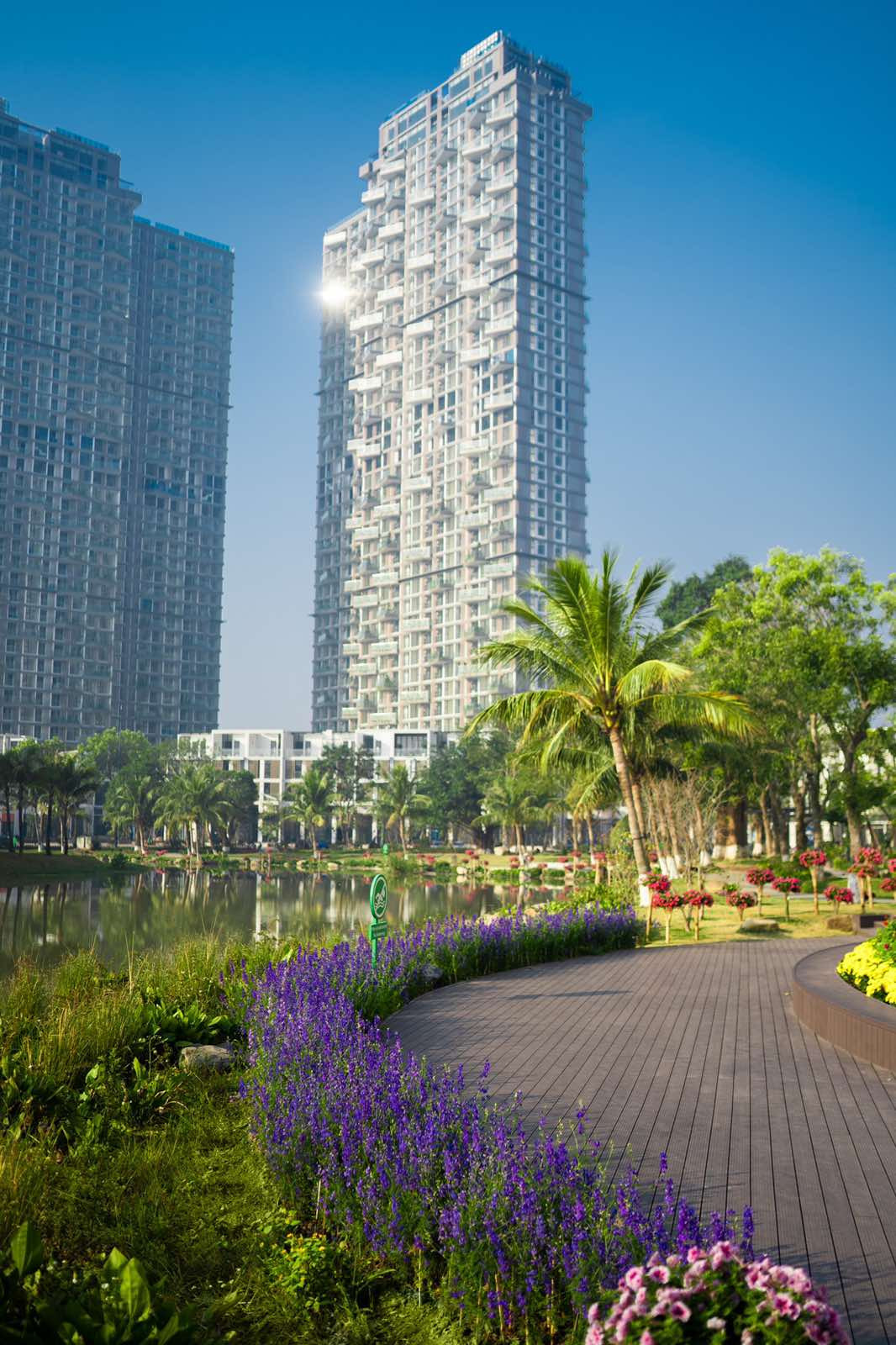
Vuong Quan Ngoc, Digital Transformation Consultancy's Director at FPT, notes that green construction has extended beyond real estate developers. Enterprises in other business fields are going green with their own policies and strategies.
“I believe that green works will be seen as a ‘weapon’ in the competition to attract clients. Green construction helps businesses become more competitive and attract investors from large markets, as well as receive preferences from international organizations and governments,” Ngoc said.
“When calling for capital, green works will be a ‘plus point’ for businesses in the eyes of investors who want to develop green economy,” he explained, adding that Vietnamese enterprises should exploit the advantage, while facing the risk of foreign partners leaving Vietnam for other countries that have lower labor costs.
Vu Hong Phong from IFC (International Finance Corporation) noted that the number of green works in the fields of textile and garment and footwear is increasing rapidly. Clients and supply chains are the two major factors that force Vietnamese enterprises to develop green works.
A cheap labor force is no longer the only competitive factor to attract and retain foreign investors.
The enterprises that do outsourcing for Nike, for example, have to satisfy the company’s global requirements, including on green production, or they will lose orders from the multinational.
Phong said that investors in education and resorts have also begun showing their interest in green works. Finance and investment funds also want to pour money into green fields.
Most recently, VietinBank has added green works to a green financial package worth VND5 trillion expected to be launched in the time to come, thus helping enterprises and individuals access green capital.
Green requirements
In theory, green works involve many multi-disciplinary technical standards (architecture, construction... etc) and multi-subjects (investors, real estate developers, design consultants, subcontractors, major contractors, material suppliers, equipment suppliers, management and operating units...), working towards the goal of sustainable development with three main pillars: environmental (good effects for the environment); economic (efficiency for the economy); social performance (social activities that create value such as greater community engagement, better social amenities...).
As per the World Bank’s recommendations, green works need to satisfy major requirements, such as minimizing carbon emissions; increasing the capability of adapting to climate change and other accidents; ensuring the circularity and avoiding wastefulness in value chains; effectively managing water sources; ensuring ecological diversity; strengthening physical and mental health for people; and ensuring fair support to everyone involved in green efforts.
Nguyen Trung Kien from International Building Performance Simulation Association Vietnam (IBPSA) pointed out that though the concept ‘green work’ has become more popular, businesspeople still do not have deep understanding about how to manage green works effectively. Some of them believe that it simply means ‘green trees’.
The most common mistakes made by businesspeople are obtaining green work certificates for commercial purpose, rather than for environment, community and social responsibility; not having correct understanding about the benefits of green works; paying attention to initial costs rather than the costs for life cycle; lacking knowledge and experience in designing and execution of green works; and not paying appropriate attention to the efficiency after putting works into use.
Ngoc from FPT Digital has warned of risks for enterprises when developing green real estate.
First, internal risks. The investment cost for transformation and replacement is high, while staff still cannot adapt to the changes in systematic operation. Second, local risks. Workers in localities still don’t have skills and they are not well trained. It is difficult to treat waste.
Third, regional risks. The geographical position is not advantageous which cannot connect with neighboring areas. Fourth, natural risks. To minimize risks, which could be climate change and rapid urbanization which causes pollution, it is necessary to apply clean energy solutions and smart infrastructure, as well as strengthen cooperation with foreign institutions, partners and governments to get support in case of emergency.
Ngoc suggested ‘double transformation’, i.e., digital and green transformation, saying that this would help the industrial real estate sector overcome difficulties, bring benefits in the short term (more revenue, emission reduction), and in the long term (clean energy, more jobs).
Binh Minh